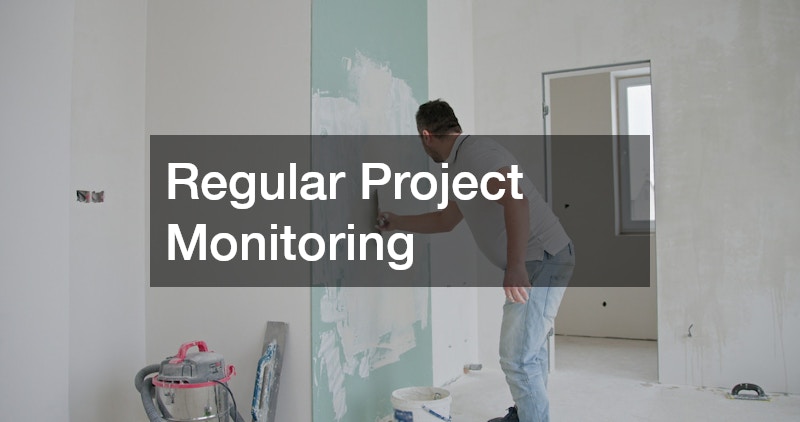Home remodeling projects can be daunting, especially when it comes to managing finances. Choosing to work with a skilled remodeling contractor can help you maximize your budget while achieving the home of your dreams. This article will explore some key questions and considerations when working with contractors to ensure you get the most out of your investment.
Choosing the Right Remodeling Contractor
Research and References
Embarking on a home remodeling journey requires you to begin with thorough research and an analytical mindset. By ensuring you obtain references and reviews from previous clients, you can glean insights into the contractor’s reliability and quality of work.
This diligence at the outset can prevent costly mistakes and regrets further down the road, saving both money and time.
When reviewing references, it’s crucial to ask previous clients about their experiences and satisfaction levels regarding the work completed. Engaging with former clients can provide perspectives that uncover the contractor’s problem-solving abilities and adaptability in unexpected situations. This step is invaluable in building confidence that the chosen professional can deliver on their promises.
Assessing Credentials and Experience
Verifying a contractor’s credentials is a critical step in ensuring they have the necessary skills and legal clearance to conduct remodeling projects. It is essential to confirm that they hold the required licenses, certifications, and insurance to provide peace of mind and protection against unforeseen liabilities. A contractor’s credentials are an indicator of their commitment to professionalism and adherence to industry standards.
Experience plays a pivotal role in determining a contractor’s capability to handle your specific remodeling needs. When evaluating experience, consider not just the number of years in the industry, but also the variety and scope of projects they have completed. Contractors with a diverse portfolio are often better equipped to offer innovative solutions that align with your design aspirations while maintaining budgetary compliance.
The Best Practices for Setting a Remodeling Budget
Understanding Costs and Estimates
Creating an accurate budget begins with understanding the costs and obtaining detailed estimates for every aspect of the remodeling project. This involves line-by-line documentation of materials, labor, and any potential auxiliary expenses that might arise. By dissecting estimates in this way, homeowners can prevent budget overruns and ensure that financial resources are allocated most effectively.
Engaging in thorough discussions with your contractor about the anticipated costs is fundamental. This dialogue helps clarify any uncertainties and facilitates a shared understanding of financial expectations. Open communication is essential to align on budget constraints and avoid unwelcome surprises that could derail the project’s progress.
Prioritizing Needs and Wants
Distinguishing between needs and wants is pivotal in budget allocation to ensure focus remains on essential elements of the remodeling project. Begin by identifying the functional needs that must be addressed for structural integrity and habitability. These fundamental aspects should take priority over aesthetic desires that do not contribute directly to the property’s core value.
After securing a clear understanding of necessary improvements, homeowners can then contemplate those changes that enhance living comfort and personal style. This prioritized approach enables you to make informed decisions about how additional features can be integrated without exceeding the budget. In this way, financial resources are directed towards achieving a balance between functionality and visual appeal.
Ensuring Quality Work Without Overspending
Contractor Communication and Transparency
Maintaining open lines of communication with your contractor is essential to achieving quality work within the confines of your budget. Transparency about project timelines, material specifications, and labor requirements forges a trustworthy relationship. Such candor ensures accountability and facilitates collaborative problem-solving, should any challenges arise during the renovation process.
Regular meetings to discuss project updates and address any emerging concerns are fundamental to keeping all parties aligned on expectations. These interactions provide a platform for clarifying any misunderstandings and adjusting plans to accommodate budgetary constraints. As a result, the collaborative dynamic fosters an environment of mutual respect and commitment to excellence.
Regular Project Monitoring
Consistent monitoring and progress evaluation play key roles in maintaining control over the remodeling process. By actively participating in scheduled site inspections, homeowners can ensure adherence to the project’s specifications and timelines, preventing deviations that could incur additional costs. This hands-on involvement empowers homeowners to catch potential issues early, avoiding the expenses associated with post-completion corrections.
Collaborating with contractors to implement milestone check-ins creates opportunities for course corrections as the project evolves. Monitoring project flow regularly also allows for timely adjustments that keep the renovation within budget, emphasizing proactive management as a protective measure against overspending. This vigilance reinforces the commitment to achieving the project goals efficiently and effectively.
Working with a home remodeling contractor can help transform your living space without breaking the bank. By choosing the right contractor, setting a realistic budget, and maintaining open communication, you can maximize your remodeling investment and create a home that reflects your style and needs. The strategic approach to contractor selection, budget management, and project oversight paves the way for a smooth and rewarding remodeling experience, culminating in the home of your dreams.




